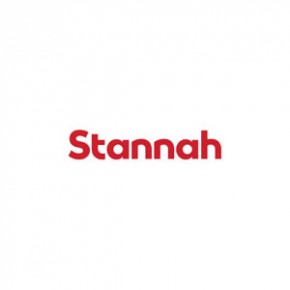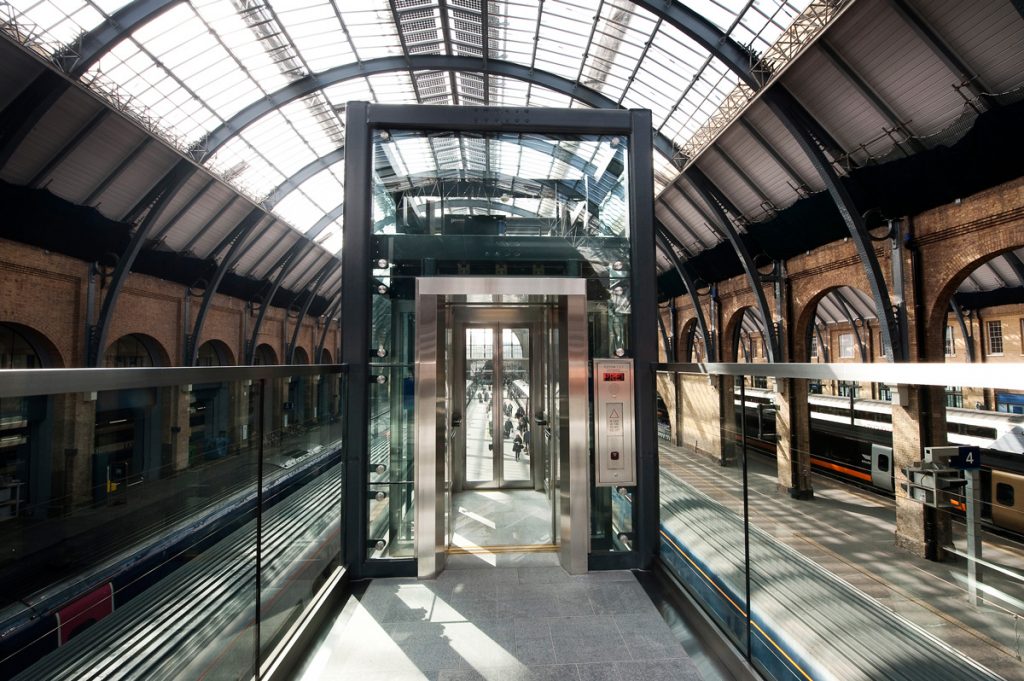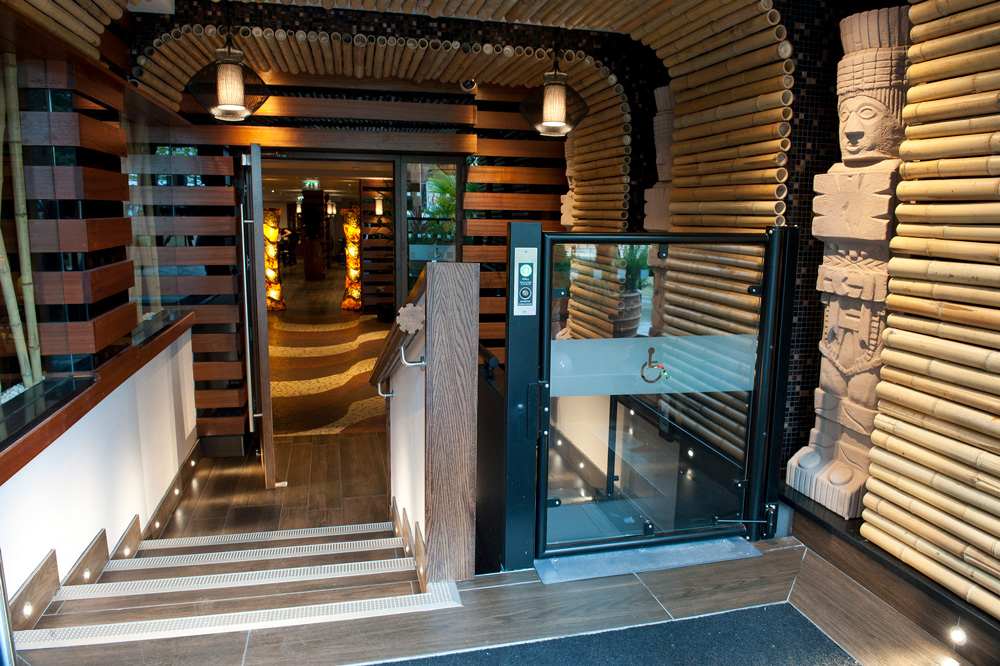
Stannah: Passenger or Platform Lift – the Differences…
Stannah has put together a short piece to outline the differences between the two aforementioned lift types and the directives they conform to…
What is a lift?
Lifts are key to the vertical circulation of people in any public building. Whether it’s a simple change in the level where it’s not possible to provide a ramp, or the building has two or more floors that people need to travel between. Lifts also are invaluable when it comes to ensuring easy access for those with impaired mobility across multiple storeys.
Lifts that move people fall into two categories – passenger lifts or platform lifts.
What is a passenger lift?
A passenger lift is probably what first springs to mind when you mention the word ‘lift’. These lifts can range in size from 3 to 33 people and beyond, though eight-person is the most common lift size as it is specified in Part M Vol 2 building regulations.
There are different types of passenger lifts, depending on the environment, some buildings might require their lifting equipment to have special lift requirements, such as:
– New lifts in existing buildings
– Firefighting and evacuation lifts used in case of an emergency
– Heavy duty and vandal resistance – for demanding built environments
– Lifts in a steel frame structure

Passenger lifts fall under the Lifts Regulations 2016, meaning they travel faster than 0.15m/s, allowing for relatively rapid movement of people through a building – typically a journey takes around 18 seconds between floors. The installation of a passenger lift requires a lift shaft to be built to house a passenger car and mechanism. Passenger lifts can be supplied individually, or as part of multiple lifts in major project development.
They can be designed to fit most sizes of lift shafts and structures and are best suitable for:
– New buildings, where it is easier to build a lift shaft and create a lift pit, or where there is an existing shaft.
– Any building where the lift will get extensive use, either due to the building size or because the lift will be the primary mean of travelling between floors.
– Any critical built environment that demands better management of high traffic flow of people and large capacities.
What is a platform lift?
For the past decades, platform lifts have also been tasked with transporting people and has found particular favour as an access solution for wheelchair users. Sometimes called vertical platform lifts, are best suited to smaller passenger numbers (up to five people) travelling shorter distances. These access lifts can range in size from one person/wheelchair user to up to five people.
There are many variants within the platform lift family – Stannah’s blog regarding the choices & differences gives a helpful overview of:
– Open platform lifts
– Enclosed (or cabin) platform lifts
– Low pit lifts (sometimes called low-speed lifts)
– Wheelchair platform stairlifts

Due to slower speed, they are designed to provide vertical movement between floors in a low rise building – typically between two to four floors. Platform lifts speed is limited to 0.15m/s so platform lifts fall under the Supply of Machinery (Safety) Regulations 2008 so travel between floors averages around 22 seconds. Platform lifts can be used indoors or out and can also be designed for use in vertical and inclined spaces – even curved staircases. Their floor can be raised and lowered from below by a hydraulic or traction system.
Platform lifts are a great addition for:
– Low rise buildings or where space is tight, a platform lift can be a good solution – as requires a much smaller footprint.
– Buildings where there is a disabled access problem.
– Residential settings, their smaller footprint and less onerous building requirements provide flexibility, speed of installation and cost savings.
Which type of lift do I need?
The preference of building standards and best practice is for a passenger lift first and foremost. However, depending on the building constraints and requirements it may be the case that your building needs a platform lift.
Here’s a neat little summary of the key differences and a little more detail on the benefits of each type.
| Product type | Passenger lift | Platform lift |
| Travel | Up to 40 metres | Up to 12 metres |
| Speed | > 0.15 metres per second | <= 0.15 metres per second |
| Number of people | from 3 to 33 people | from one wheelchair user to up to 5 people |
| Relevant Regulations | Lifts Regulations 2016 | Supply of Machinery (Safety) Regulations 2008 |
| Applications | Best for buildings where
|
Best for buildings where
|
Summary
Passenger lifts are favoured where speed, traffic flow and capacity are prime considerations. Typically, platform lifts are most suited for applications in low rise buildings where people are likely to use the stairs or buildings not easily accessible for the disabled. The case for opting for a passenger lift can be clearly set out in an access statement.
If your commercial premises, museum, restaurant or shop has two or more floors or changes in level within the building, then you will likely require some sort of lift if you are to provide disabled access and access for all. Stannah offers a broad range of lifts, so can advise on the best product to suit your needs.
Visit Supplier's page
Latest news

28th March 2025
Ideal Heating Commercial announces 10-year warranty on Evomax 2 boiler
Evomax 2, the UK’s number one selling commercial wall-mounted boiler from Ideal Heating Commercial, is now available with a 10-year warranty.
Posted in Articles, Building Industry News, Building Products & Structures, Building Regulations & Accreditations, Building Services, Facility Management & Building Services, Heating Systems, Controls and Management, Heating, Ventilation and Air Conditioning - HVAC, Innovations & New Products, Pipes, Pipes & Fittings, Plumbing, Retrofit & Renovation, Sustainability & Energy Efficiency, Videos
28th March 2025
FLIR Si1-LD Acoustic Imaging Camera for Compressed Air Leak Detection
FLIR, a Teledyne Technologies company, introduces the Si1-LD, an industrial acoustic imaging camera that brings faster and more accurate compressed air leak detection to those operating on a modest condition monitoring budget.
Posted in Acoustics, Noise & Vibration Control, Articles, Building Industry News, Building Products & Structures, Building Services, Facility Management & Building Services, Information Technology, Innovations & New Products, Retrofit & Renovation, Sustainability & Energy Efficiency, Thermal Imaging and Monitors
28th March 2025
LIFTEX 2025 Seminar programme announced
Registration has opened for LIFTEX 2025. Now in its 37th year, LIFTEX 2025 is the UK’s only dedicated exhibition for the lift, escalator and access industry and takes place only once every three years.
Posted in Access Control & Door Entry Systems, Accessibility, Articles, Building Industry Events, Building Industry News, Building Products & Structures, Building Regulations & Accreditations, Building Services, Exhibitions and Conferences, Facility Management & Building Services, Health & Safety, Retrofit & Renovation, Security and Fire Protection, Seminars
28th March 2025
MCRMA welcomes ArcelorMittal UK to membership
A UK division of the global steelmaking business ArcelorMittal has become the latest new member of the MCRMA, the industry association representing the metal building envelope sector.
Posted in Articles, Building Associations & Institutes, Building Industry News, Building Products & Structures, Building Systems, Cladding, Facades, Posts, Restoration & Refurbishment, Retrofit & Renovation, Roofs, Steel and Structural Frames, Walls
 Sign up:
Sign up: